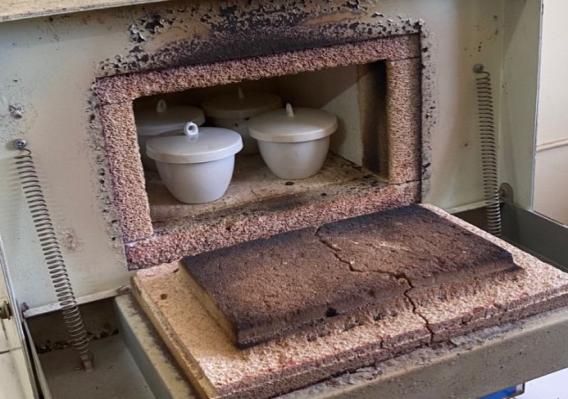Students of FMIPA UNY Use Cassava Peel to Reduce Pollution from the Leather Industry

Four students from the Faculty of Mathematics and Natural Sciences (FMIPA) at UNY have succeeded in utilizing cassava peel waste to create a magnetite-activated carbon nanoparticle composite that functions as an adsorbent for chromium (Cr) ions in the leather industry’s wastewater. The team, called “Adsorben Singkong,” consists of Ankita Cahya Muti (Chemistry, 2022), Oktavia Kusuma (Mathematics, 2022), Puput Intan Pratiwi (Mathematics Education, 2022), and Khansa Amalia Rahmah (Biology, 2023). Their research was presented at the Student Creativity Week (PKM-RE) under the title: “Utilization of Cassava (Manihot esculenta) Peel Magnetite-Activated Carbon Nanoparticle Composite as an Adsorbent of Cr Ion in Leather Factory Waste.”
The team leader, Ankita Cahya Muti, explained that this research was motivated by the high production of chromium (Cr6+) waste from leather tanning industries in Indonesia, especially in Yogyakarta. Such waste contains heavy metals that are toxic and potentially pollute the environment and endanger human health. She said that the choice of cassava peel as raw material was based on its abundant availability and under-utilization. Although cassava peel is rich in carbon content, which can be processed into activated carbon – a material effective in absorbing heavy metals from wastewater. The research process included several stages: drying cleaned cassava peel in an oven at 70 °C for 24 hours, then carbonizing in a furnace at 500 °C for one hour. The resulting carbon was then ground and sieved with a 100 mesh to produce uniform particles. Next step: the carbon activation with 1 M hydrochloric acid (HCl) solution, neutralized, then dried. The magnetite nanoparticle synthesis was done via co-precipitation: mixing iron (II) sulfate (FeSO₄) and iron (III) chloride (FeCl₃) solutions, adding ammonia until pH reached 11, then the precipitate was dried. The magnetite nanoparticles were then combined with the activated carbon at 40 °C to produce the magnetite-activated carbon composite.
Characterization of the material included instruments such as XRD (X-Ray Diffraction) to verify nanoparticle magnetite crystal size; FTIR (Fourier Transform Infrared Spectroscopy) for detecting functional groups on activated carbon and magnetite; SEM-EDX (Scanning Electron Microscope - Energy Dispersive X-Ray) to analyse surface morphology and the chemical composition of the composite; AAS (Atomic Absorption Spectrophotometry) to measure the adsorption capacity of the composite for chromium ions. Results showed that the magnetite-activated carbon nanoparticle composite successfully bound Cr ions via hydroxyl groups present on the surface of activated carbon. From AAS tests, it was found that a magnetite:carbon composite ratio of 10:0.6 provided the most optimal adsorption capacity for Cr ions after a 90-minute adsorption process.
The supervising lecturer, Prof. Dr. Dyah Purwaningsih, M.Si., appreciated this research for combining utilization of organic waste with solutions to environmental problems. “This research not only produces strong scientific data, but also has the potential to be developed to industrial scale so that it can help reduce pollution from waste in a real way,” she said. Through this innovation and research, the “Adsorben Singkong” team hopes their work can be the initial step in the development of nature-based adsorbent technology that is environmentally friendly, while also encouraging the use of agricultural waste into high-value products.






